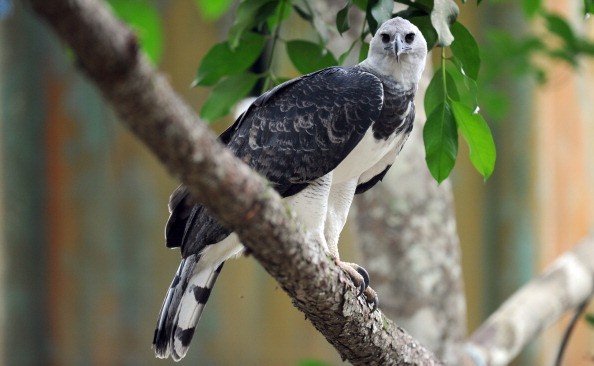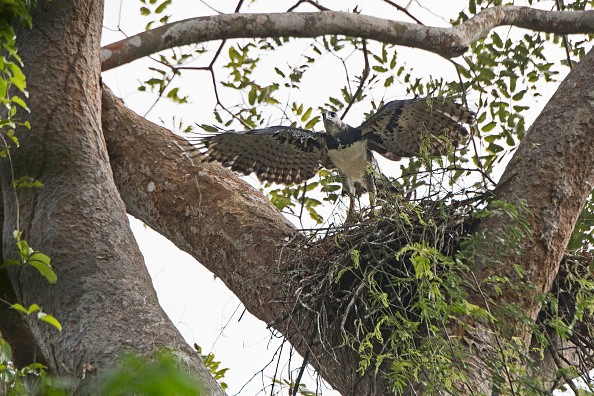The canopy in the Amazon rainforest is a refuge for tree-living species and an abode to some of the most charismatic species on Earth namely: sloths, spider monkeys, and tamarins.

Harpy Eagle (Harpia harpyja)
Unfortunately for these animals, their existence makes the top of trees the main hunting spot for birds of prey both one of the world's largest eagles - the harpy eagle (Harpia harpyja). This gigantic birds by weight of an eagle are the largest, and they can pick up even large prey like red howler monkeys and even small-sized deer.
The insatiable appetites of this animal mean that constant food consumption is a must, but in a place where habitats are falling every day, a dependable food source isn't assured even to those at the highest part of the food chain.
New research, released in the journal Scientific Reports, discovered that due to deforestation these eagles in the Amazonian forests of Mato Grosso, Brazil, are not capable of feeding their young adequately. Habitat degradation in these places brought about a sharp decrease in suitable prey species inhabiting the canopy, implying that there is food scarce and also more difficult to come by for harpy eagle parents.
The Study
To get to their conclusions, the authors of the study observed the nest of 16 active harpy eagle across a range of landscapes. The quality of the habitat differed at every site, with the loss of close-by forest ranging from 0 to 85 percent.
They installed camera traps that were directed at the nests and snuck all over underneath them collecting pieces of bone to find out what the eagles were taking home to their young.
On the basis of these analyses, the birds totaled 306 prey animals picked up by hungry harpies, majority of which were tree-living species. The top three include brown capuchin monkeys, two-toed sloths, and gray wooly monkeys.

Outcome of the Study
As loss of the forest rose, the researchers noticed that feeding rates dropped and when the study ended the researchers discovered three eaglets had lost their lives due to starvation in places with forest loss ranging from 50 % to 70 %.
This, coupled with the fact that there were no nests found in regions with over 70 percent forest loss, has been concluded to imply that there is a 50 % forest cover threshold upon which the harpy eagle's nests viability hinges.
While the eagle nests that were analyzed revealed that parents usually bring less food instead of seeking out alternative prey, one nest that was not included in the study was used as an inquisitive outlier - the birds here changed their food to a diet nearly completely made up of armadillos.
But due to the fact that the animals that participated in the study usually fell belly-down, the eaglets were not able to tip them and therefore they left uneaten. Clearly, for these juvenile birds to survive an adequate supply of appropriate prey is essential.
Related Article : Reports Showed that Once Going Extinct Bald Eagle Population Quadrupled Since 2009
For more news, updates about eagles and similar topics don't forget to follow Nature World News!
© 2025 NatureWorldNews.com All rights reserved. Do not reproduce without permission.





